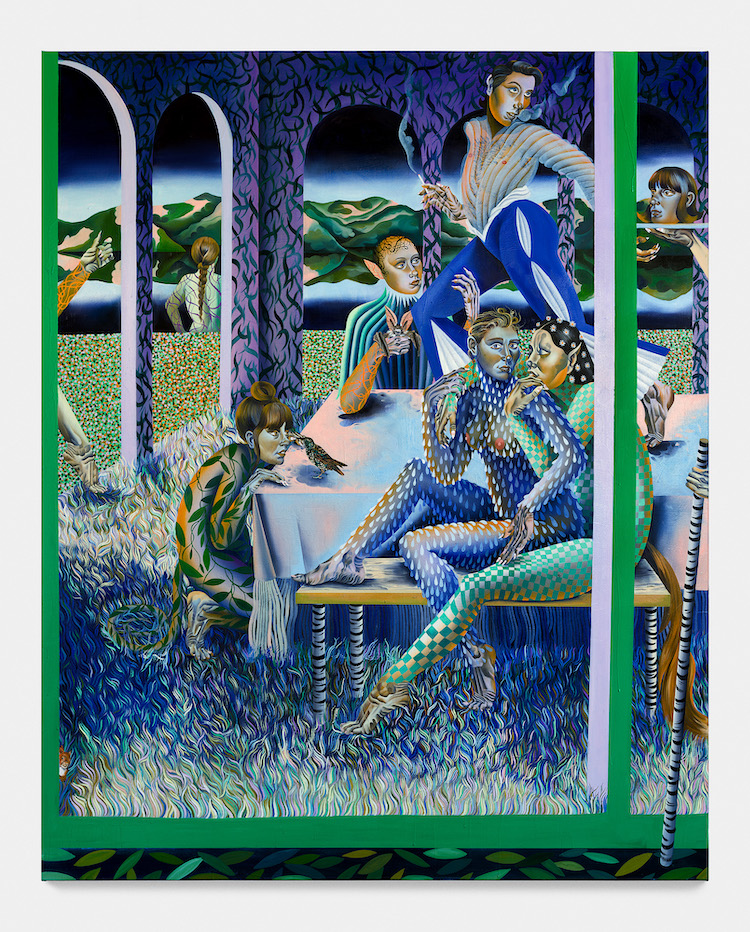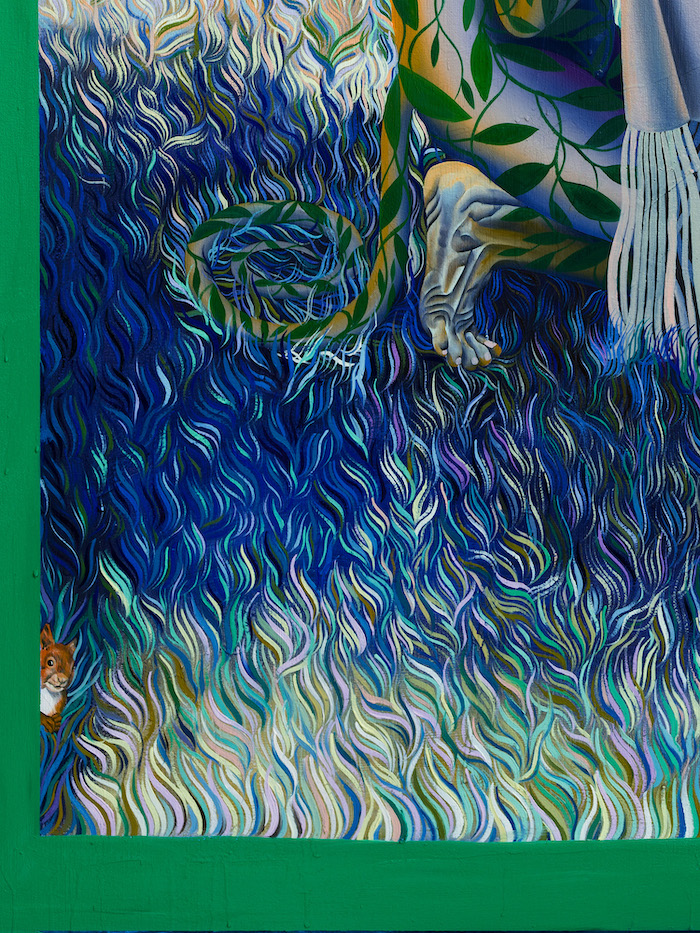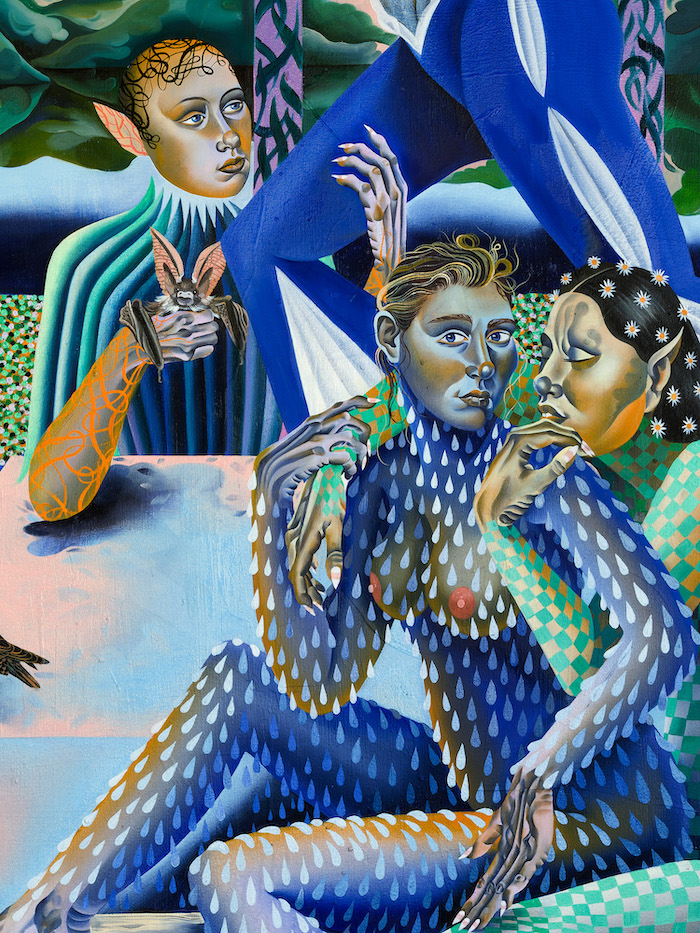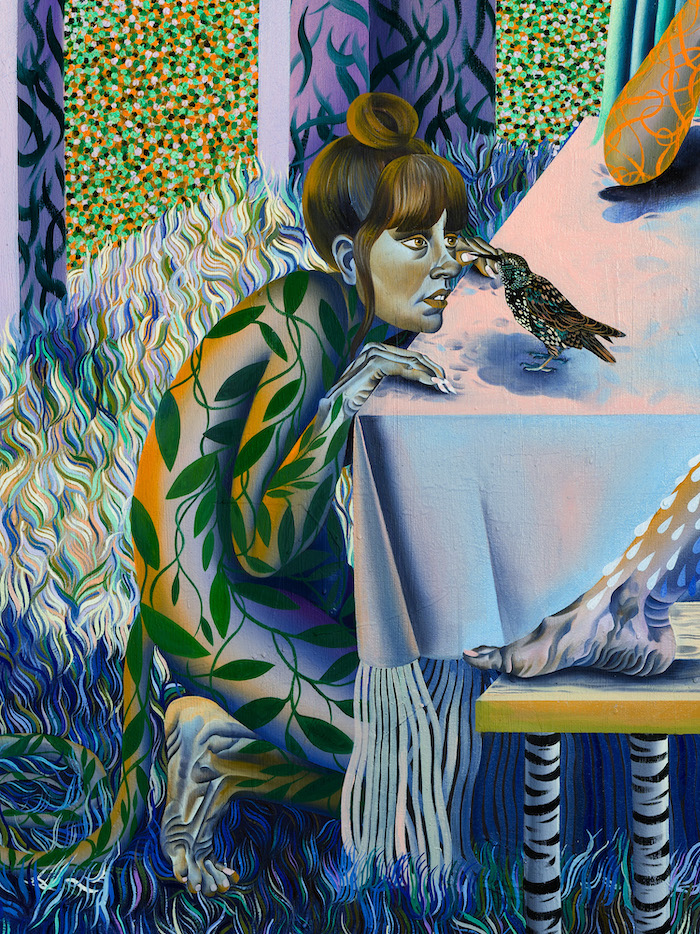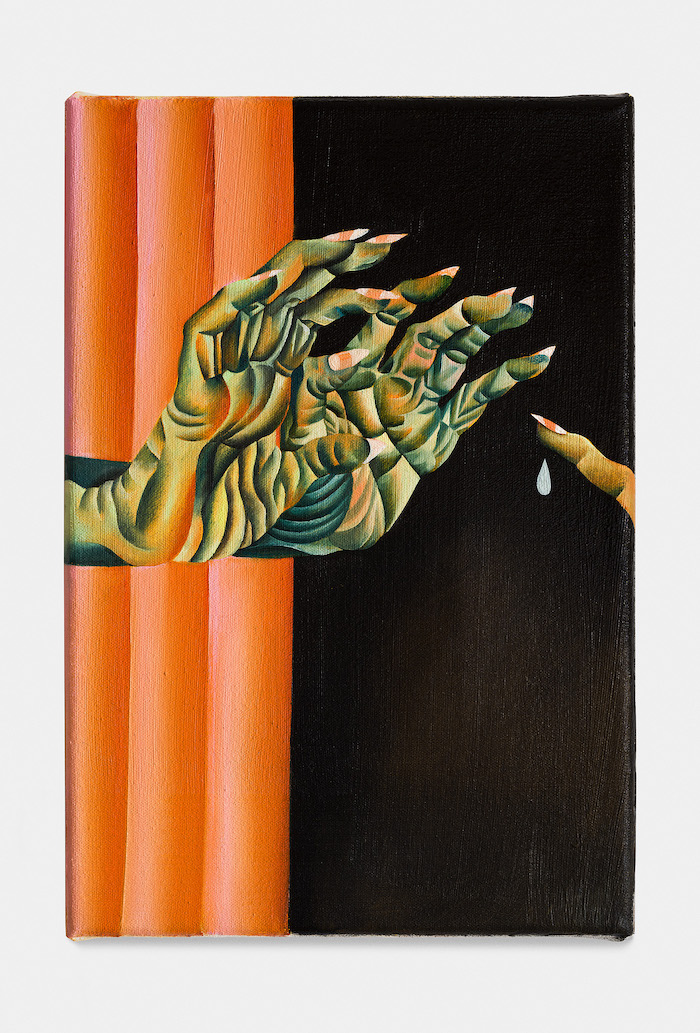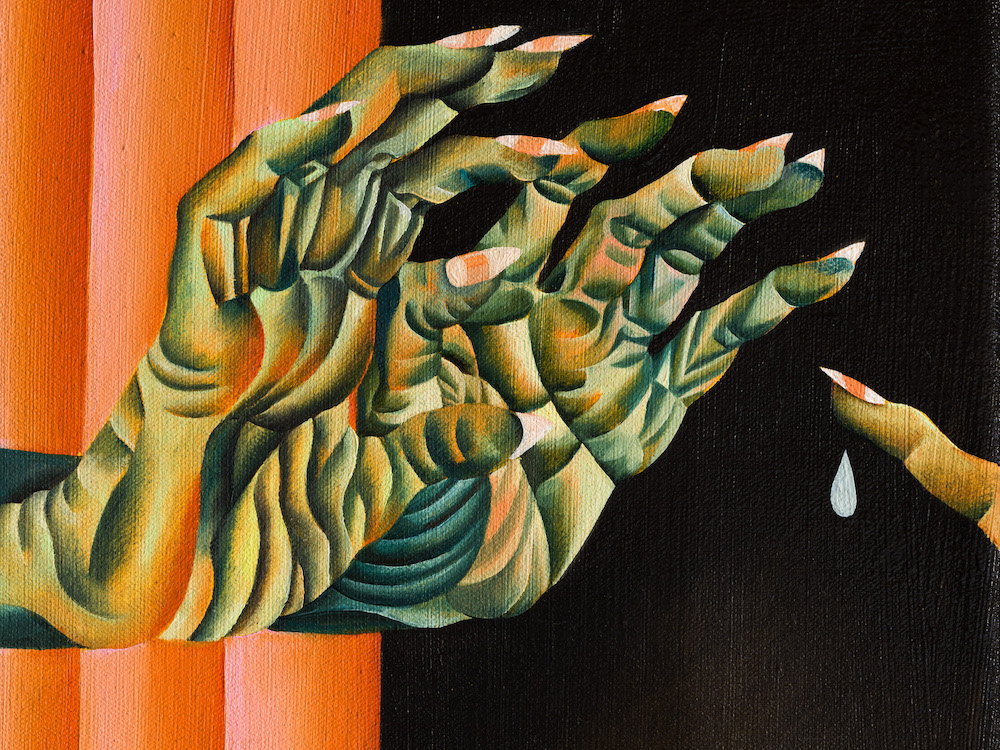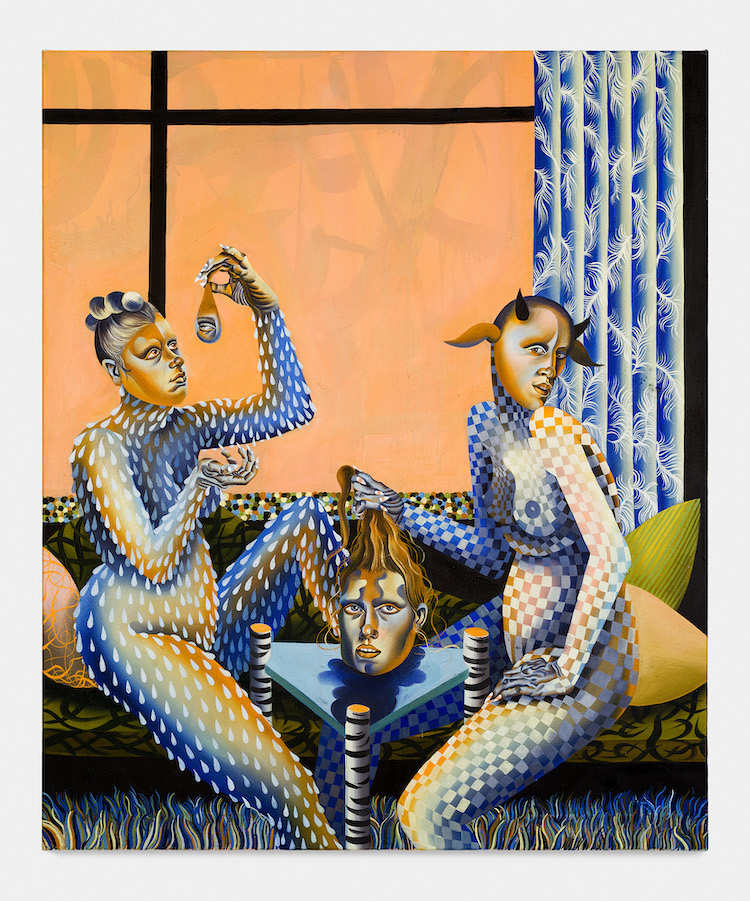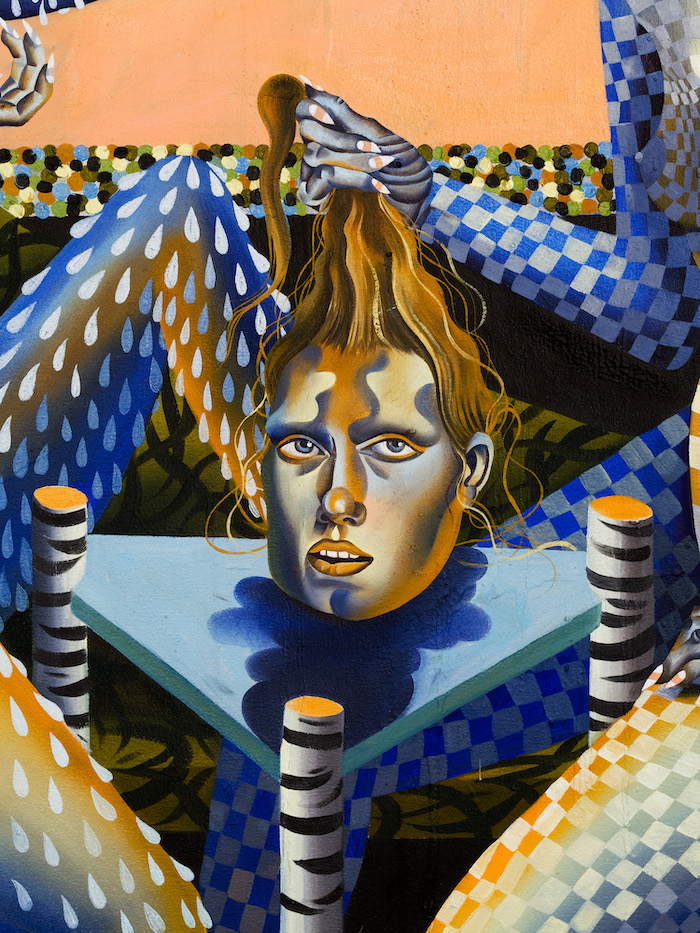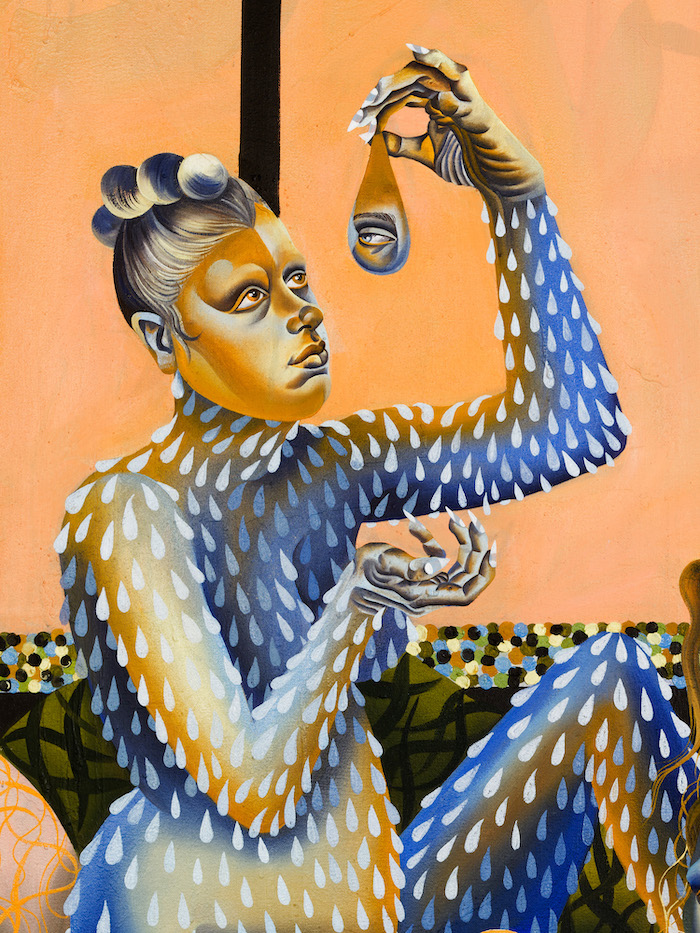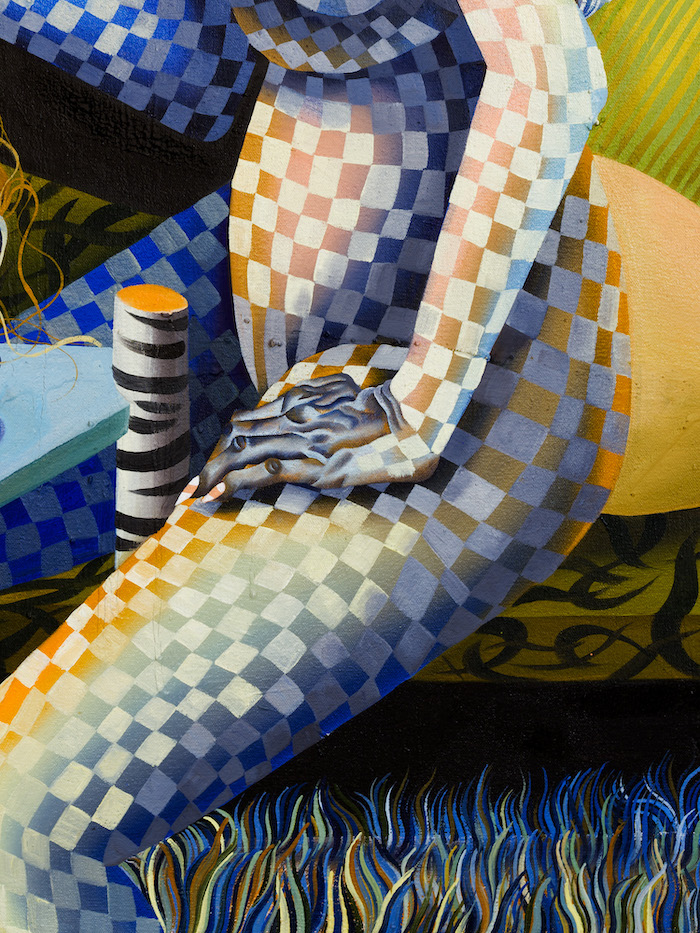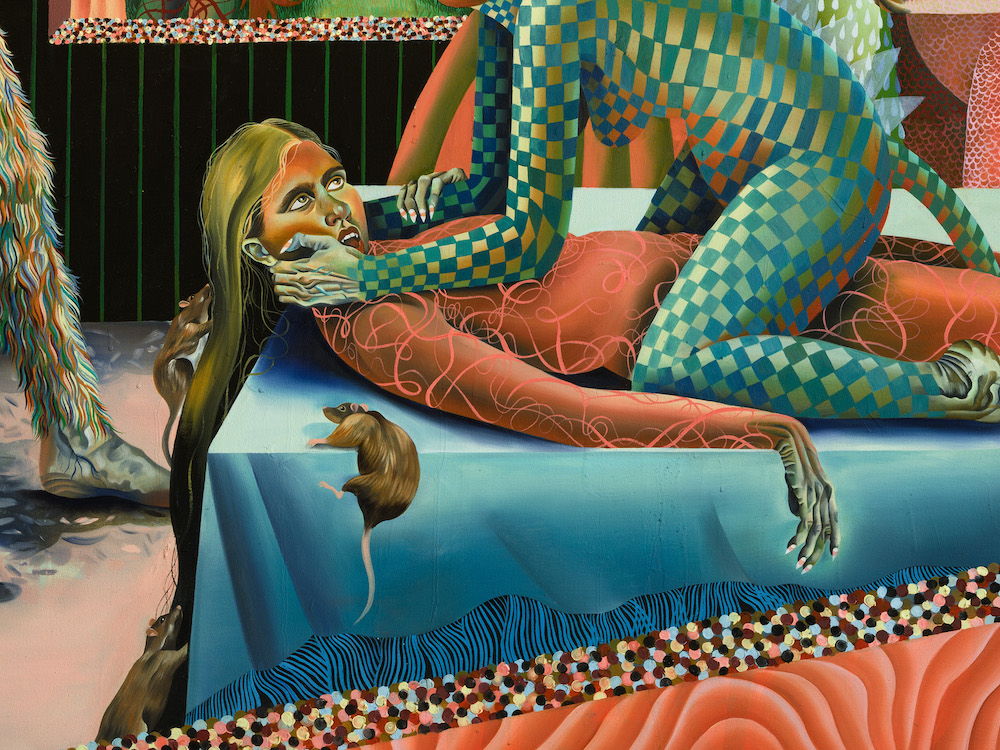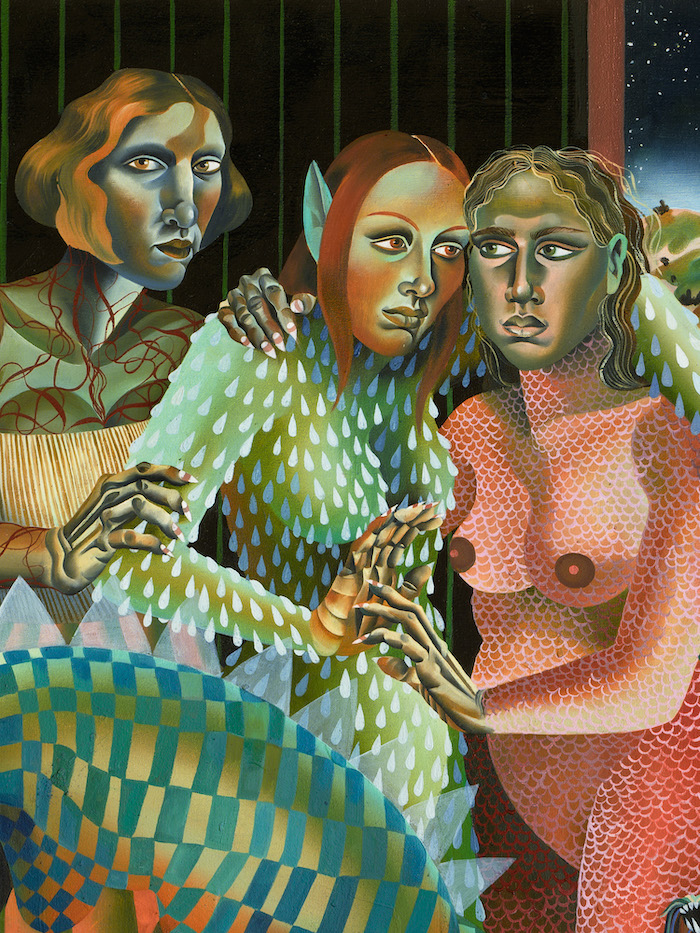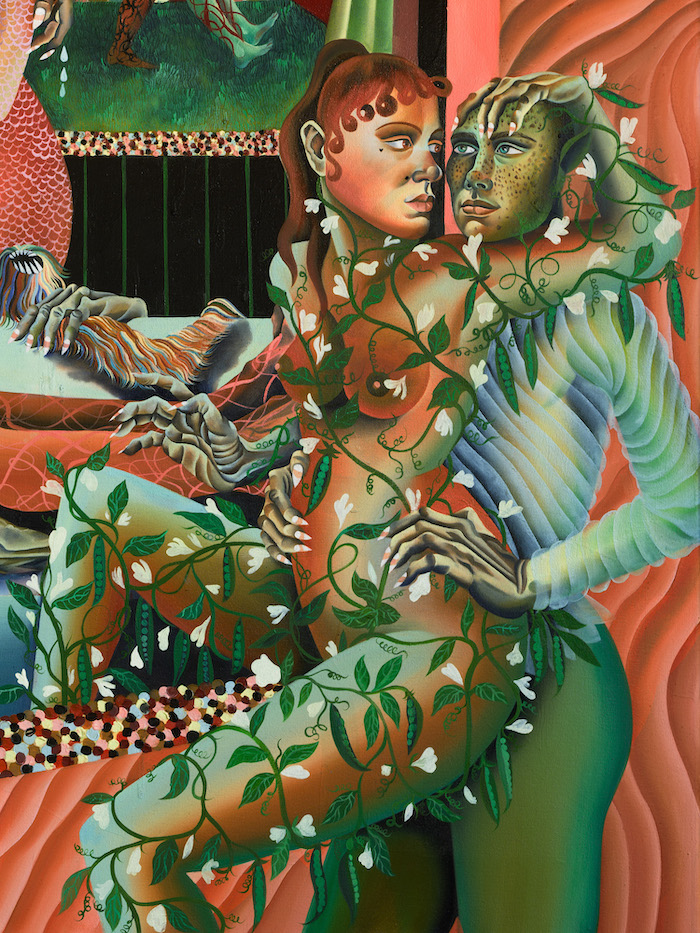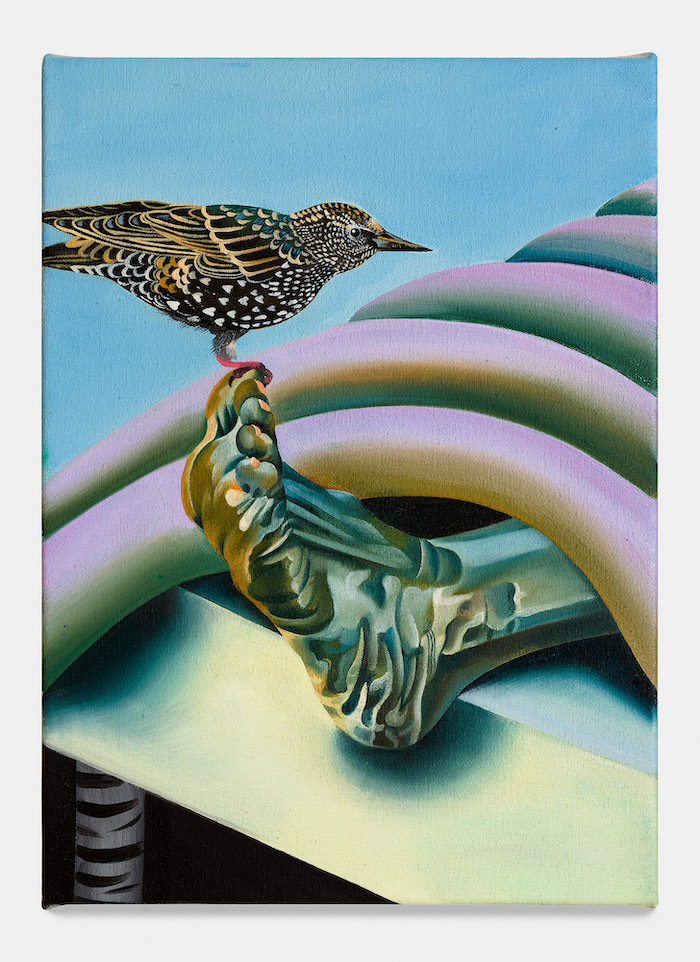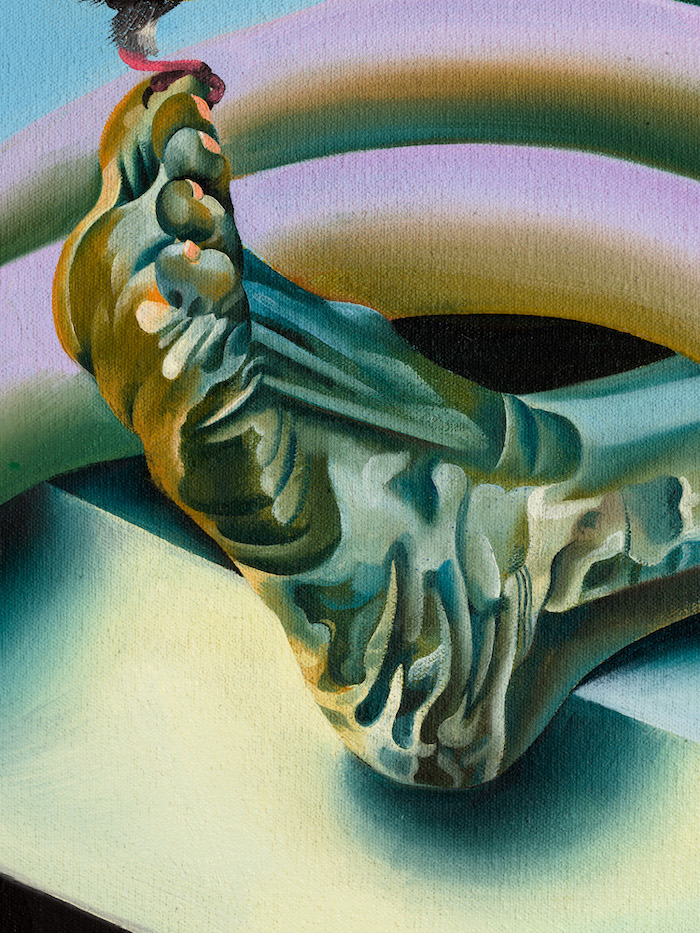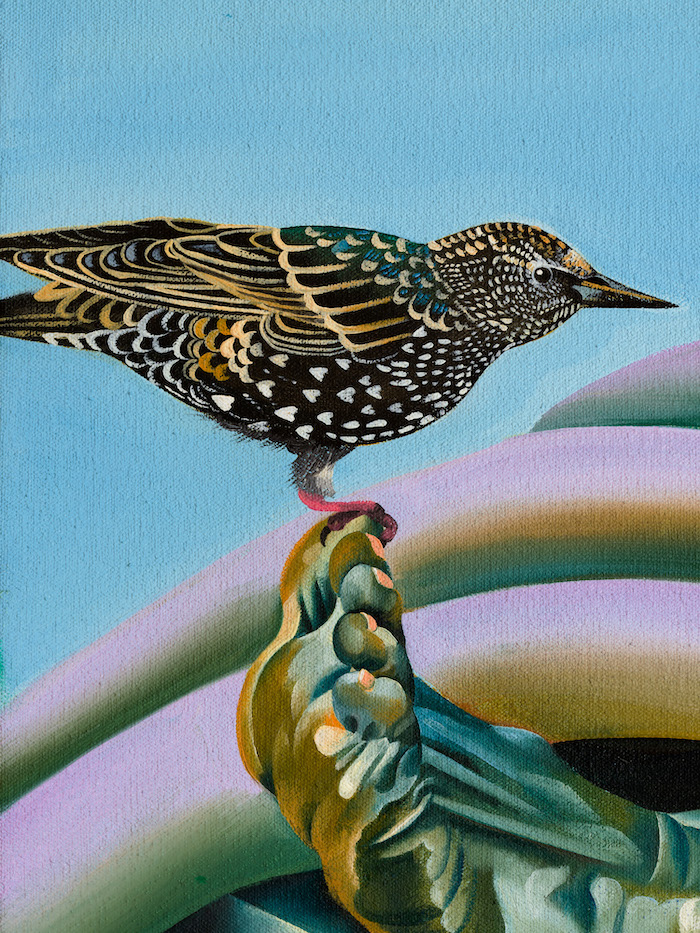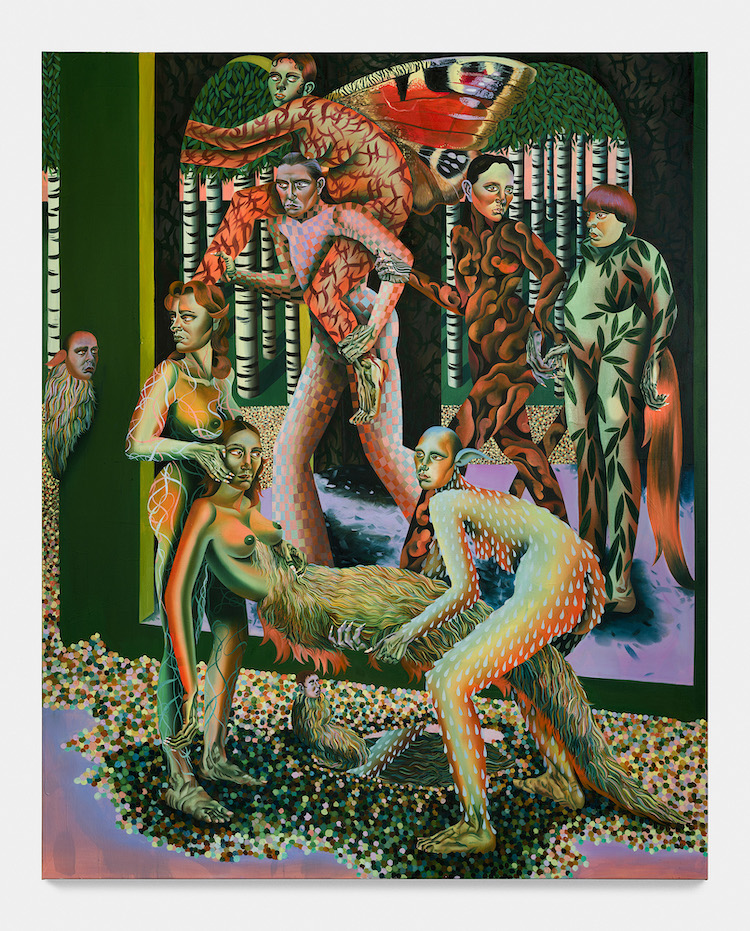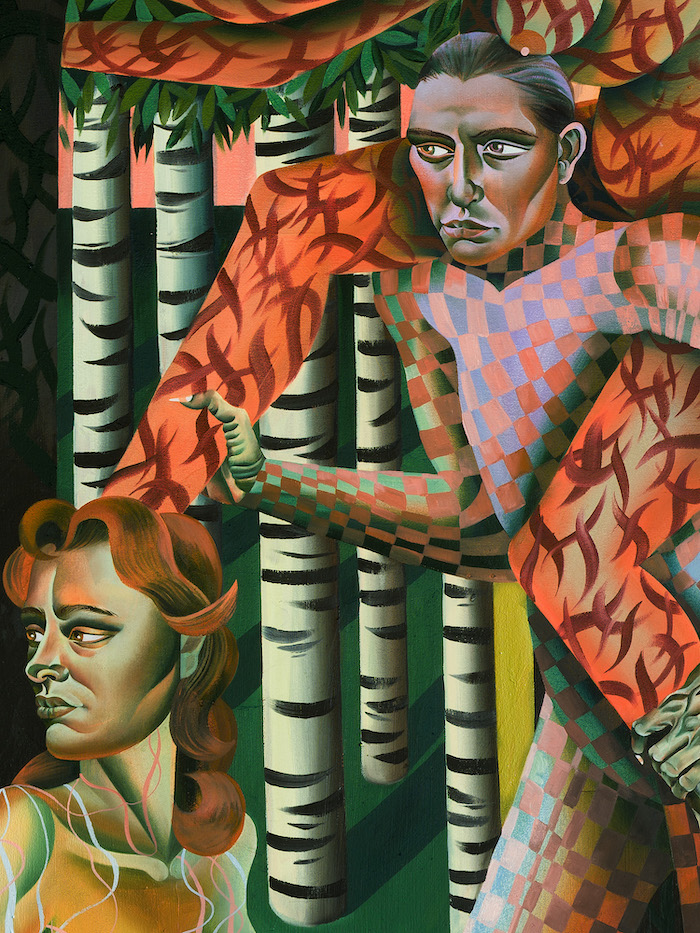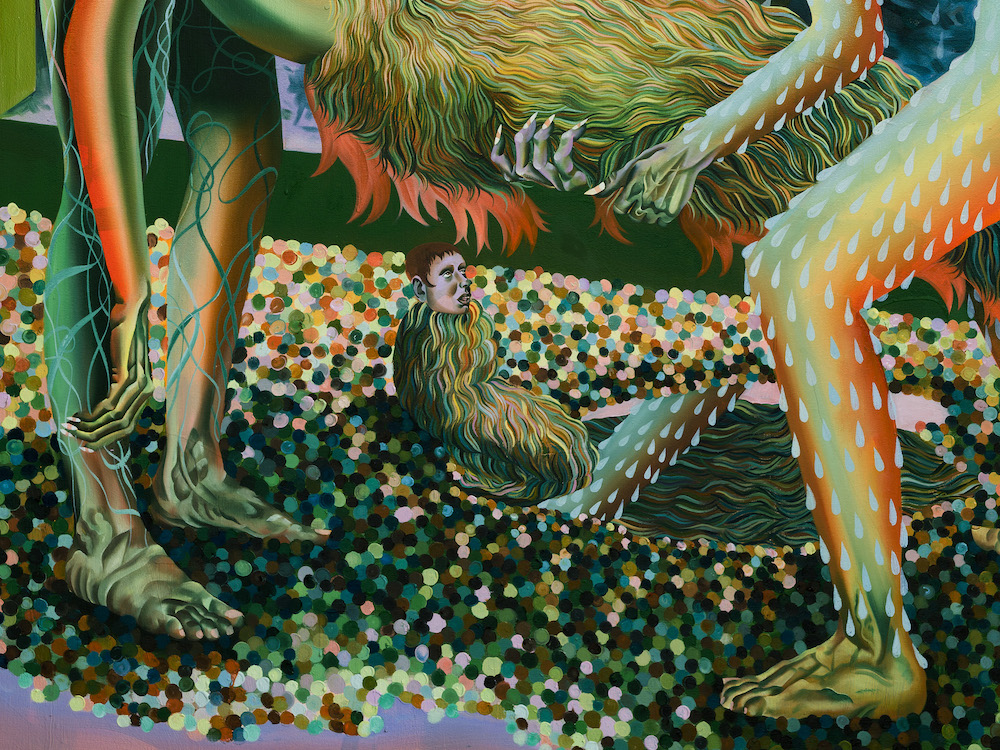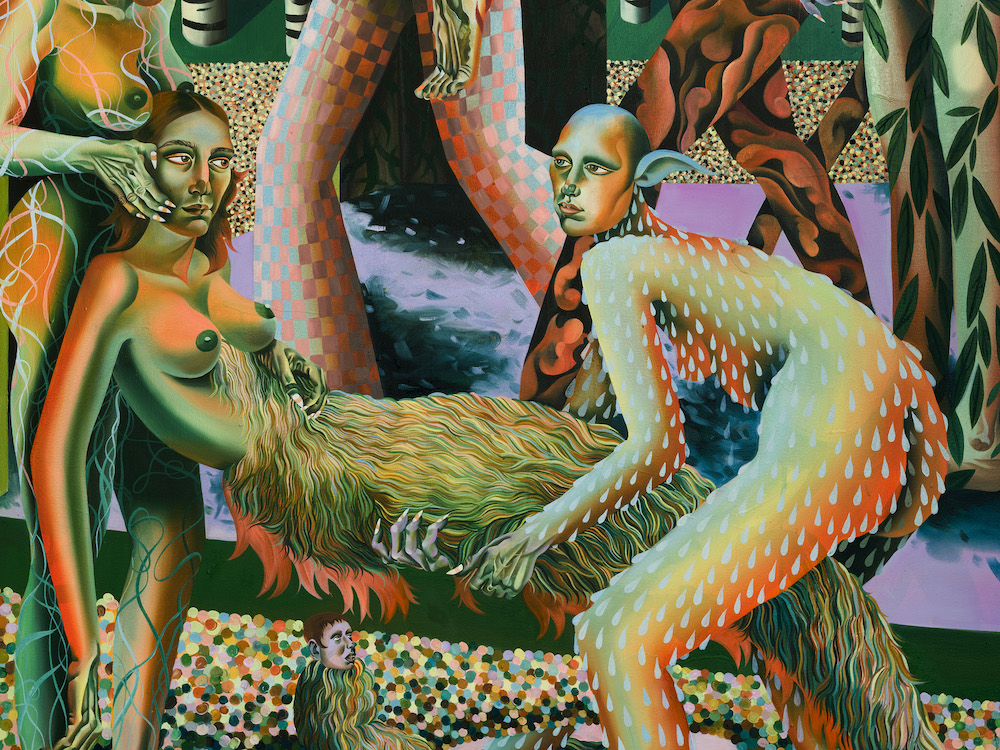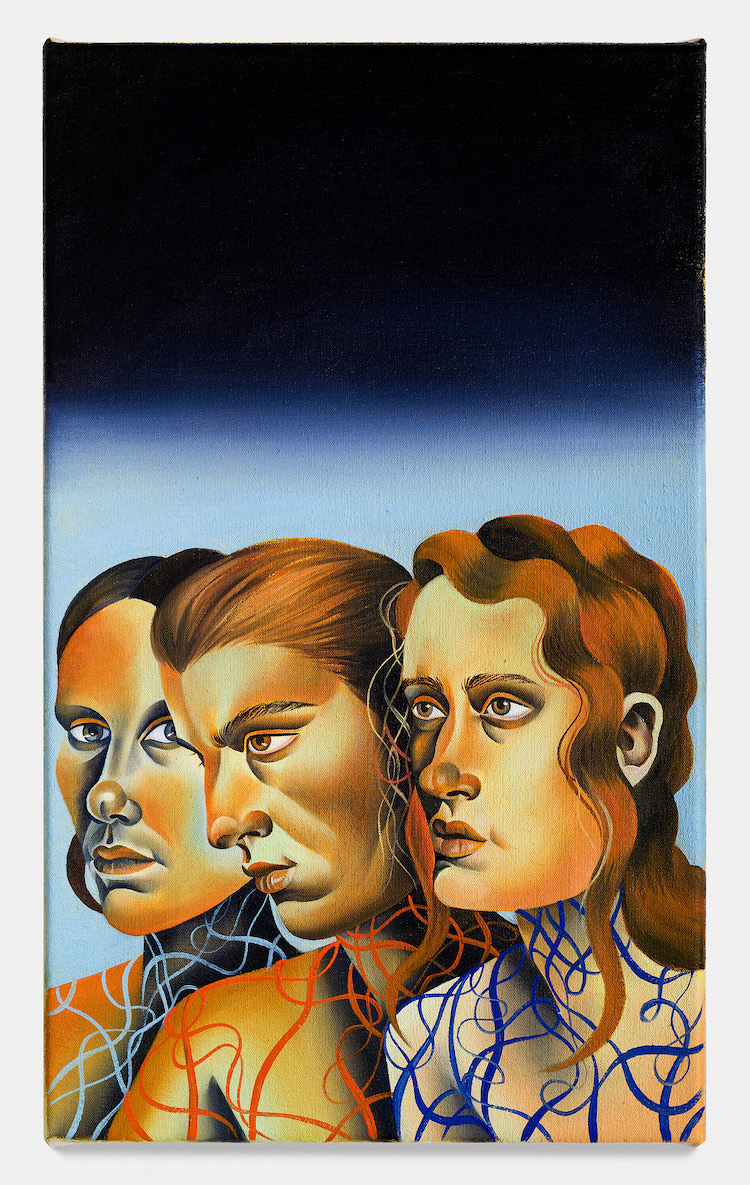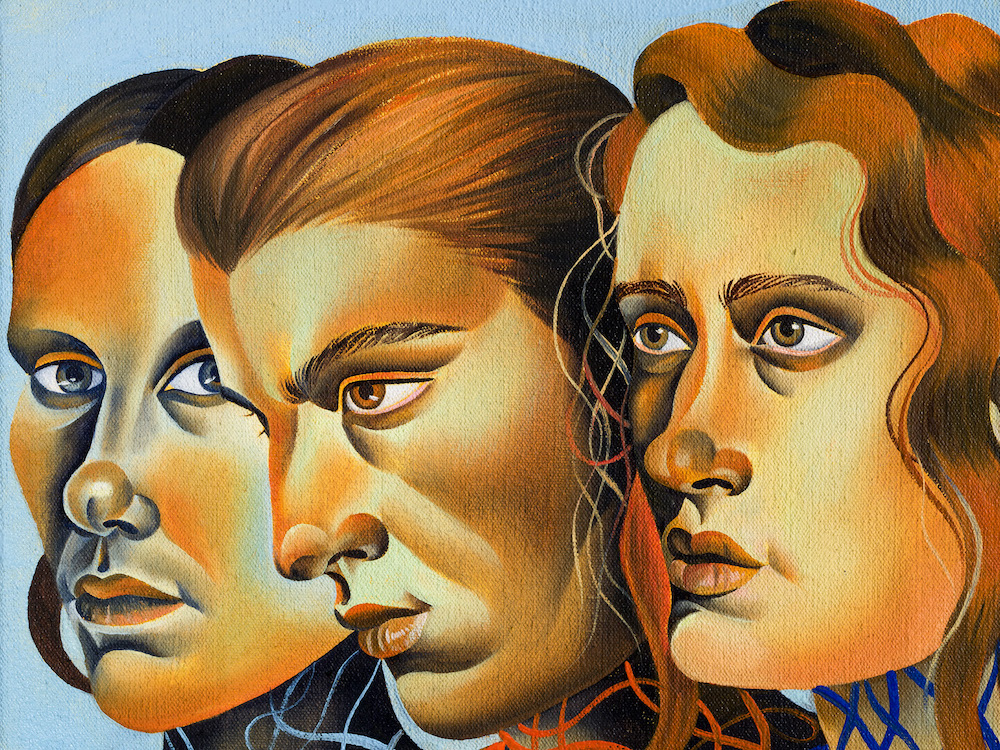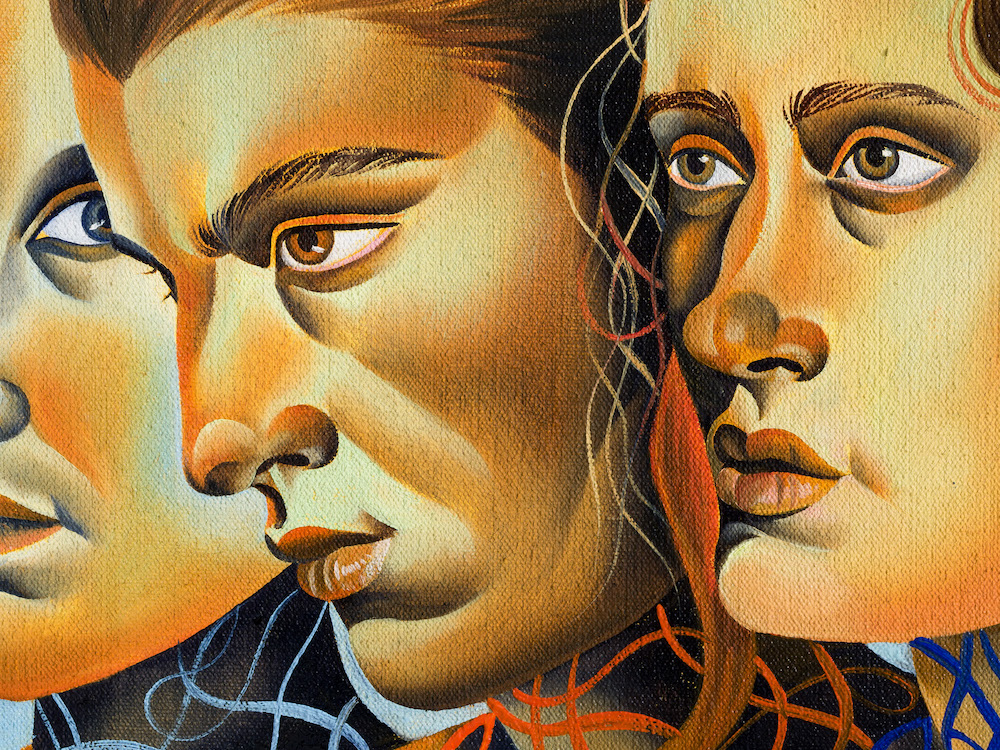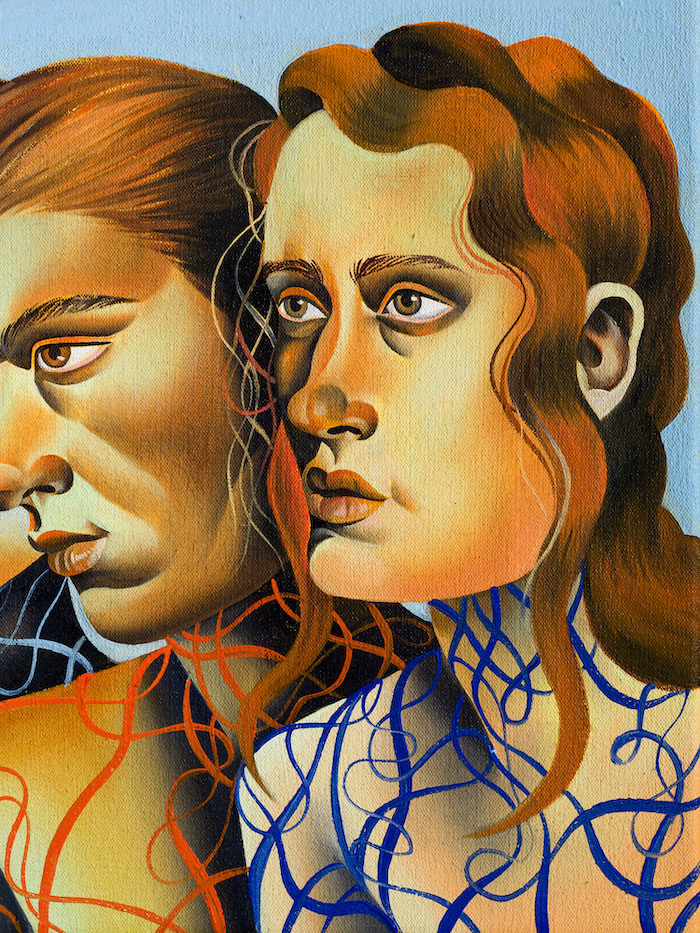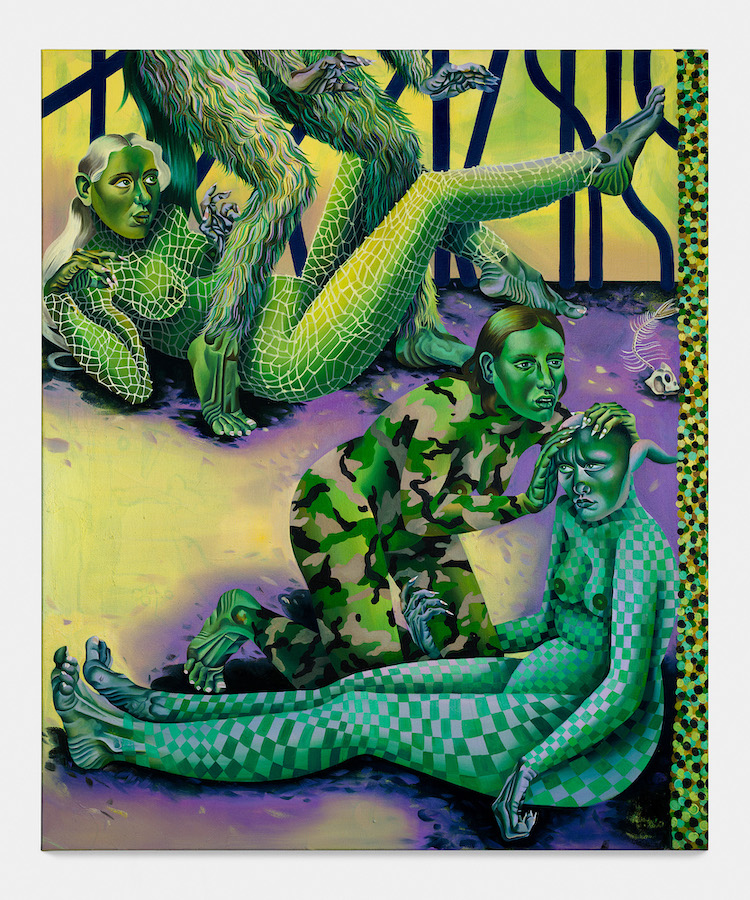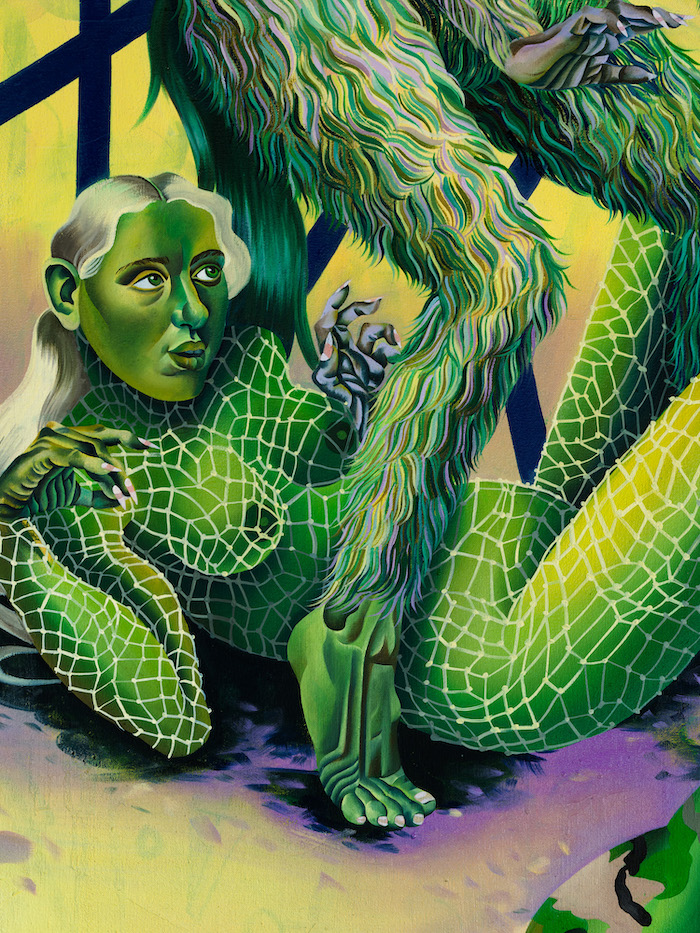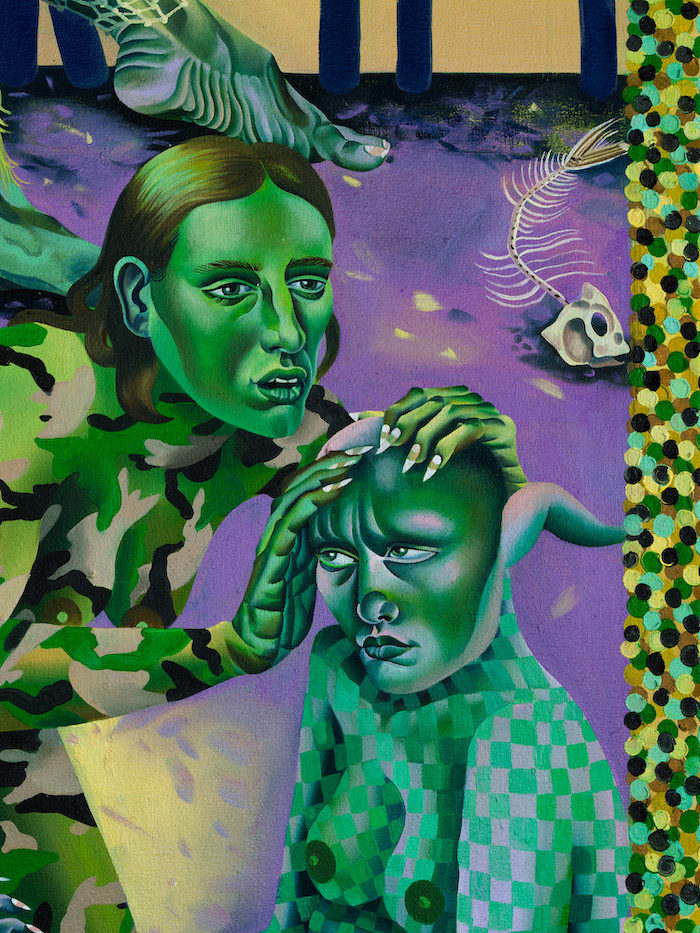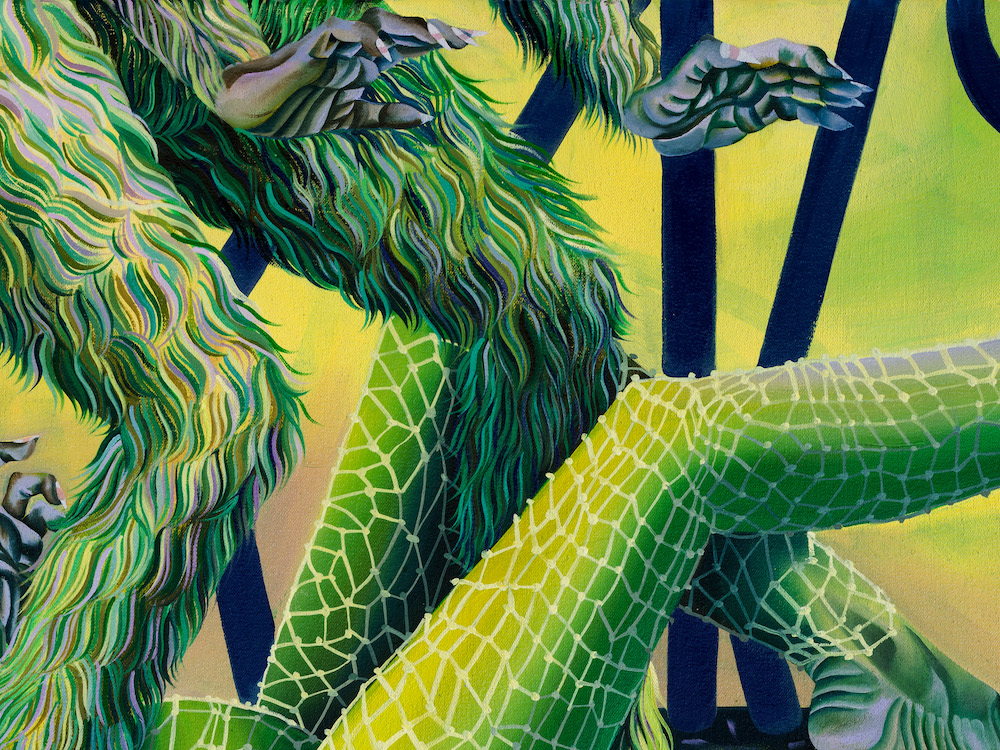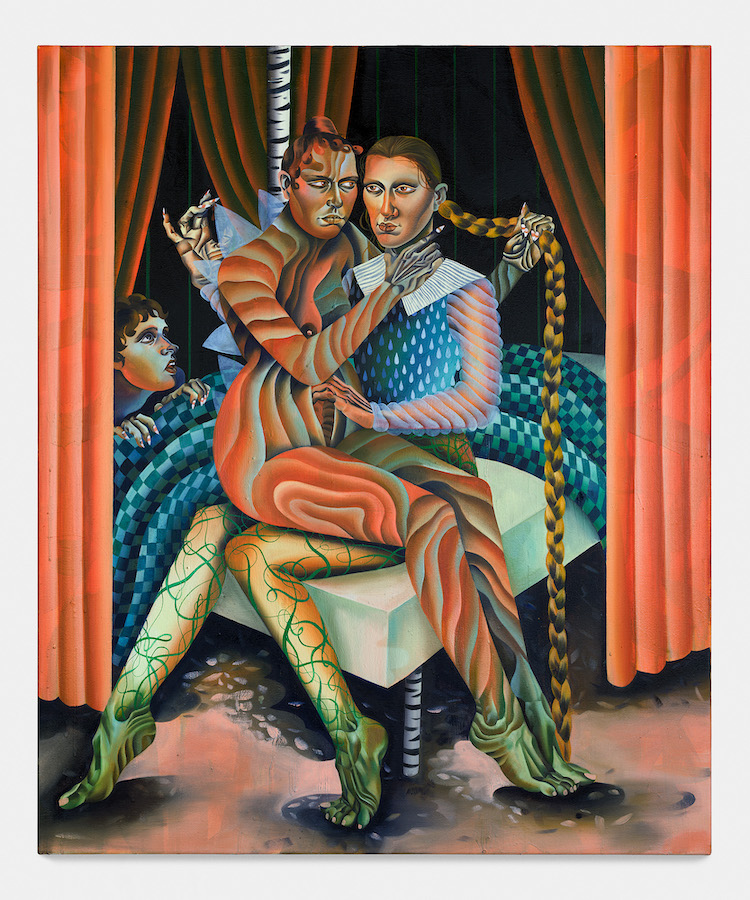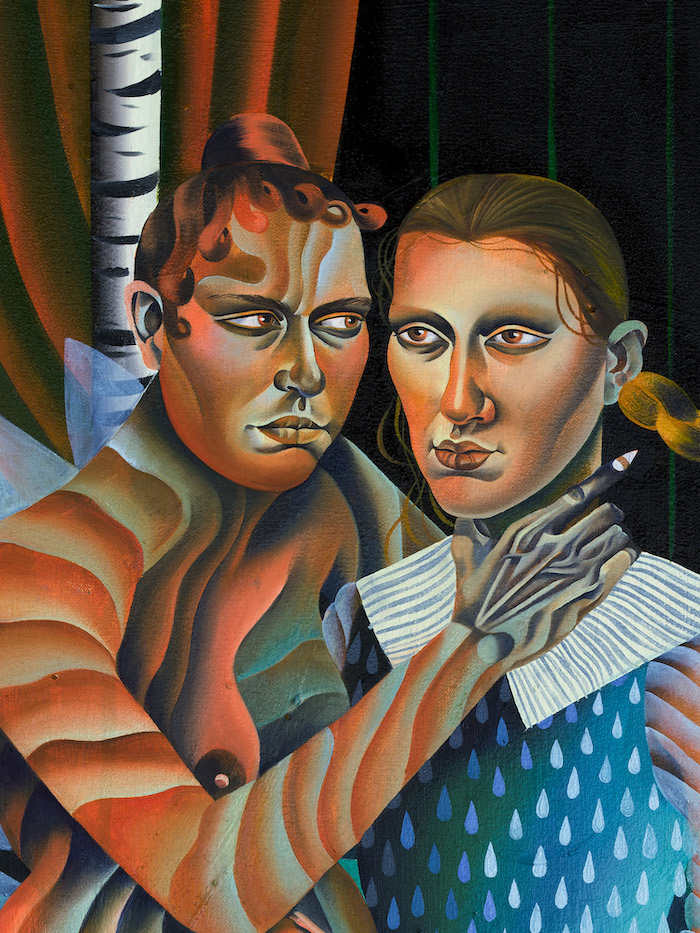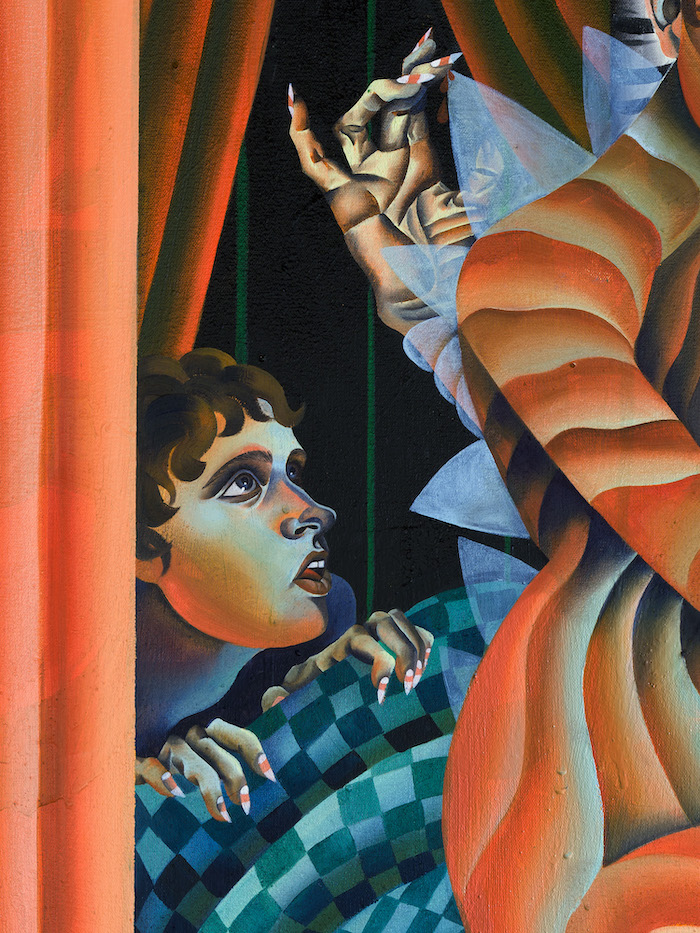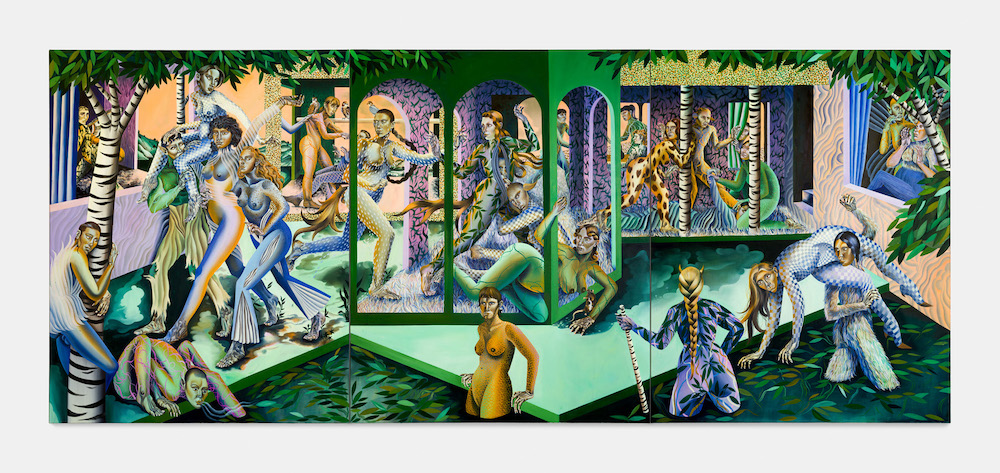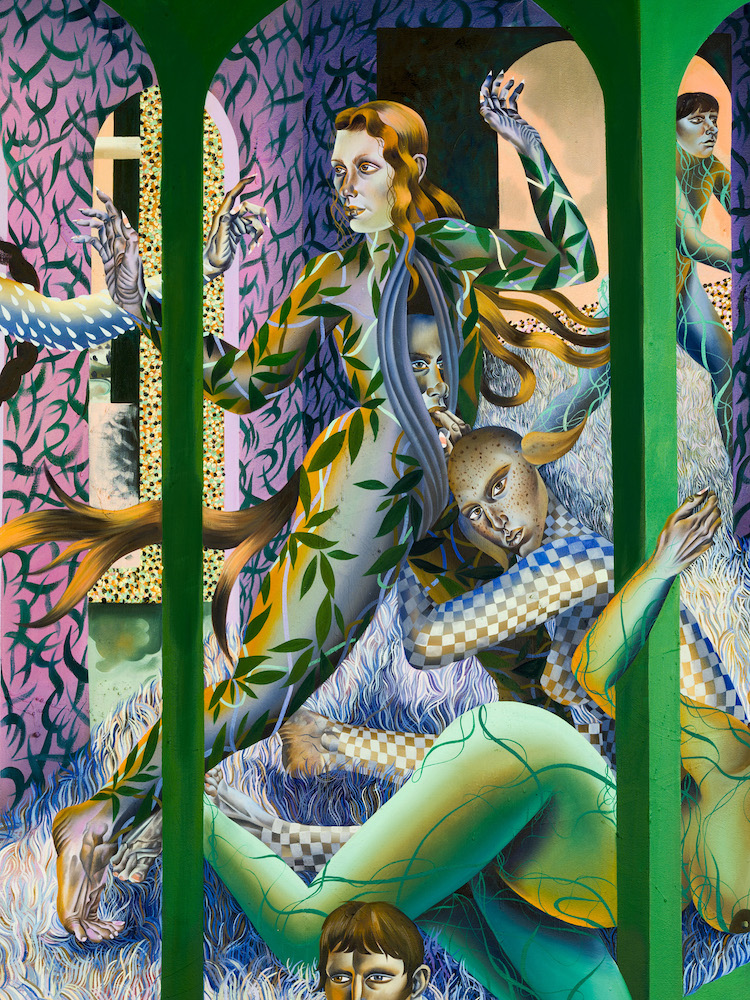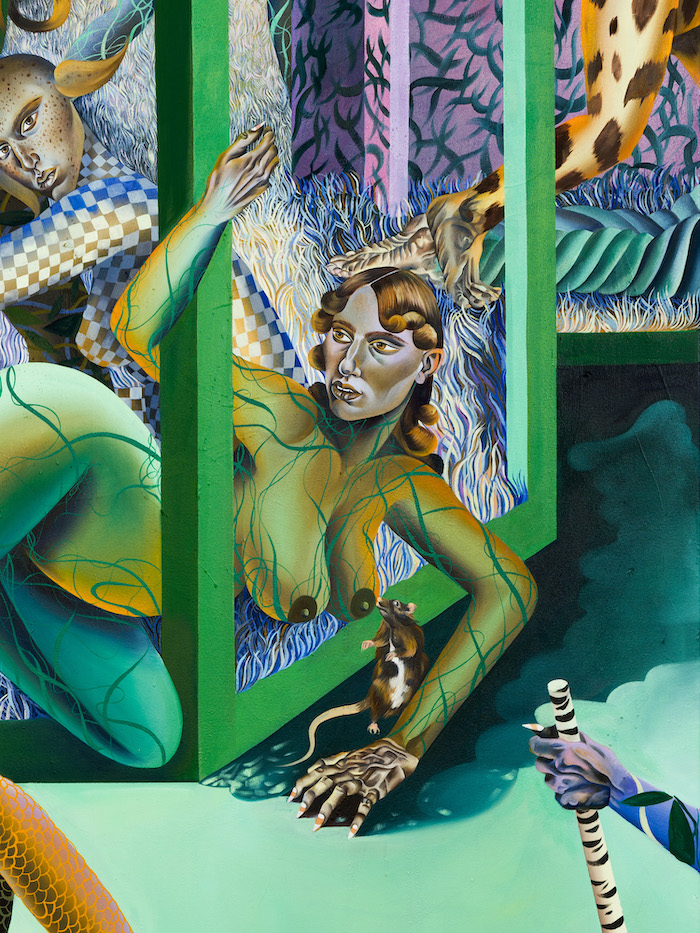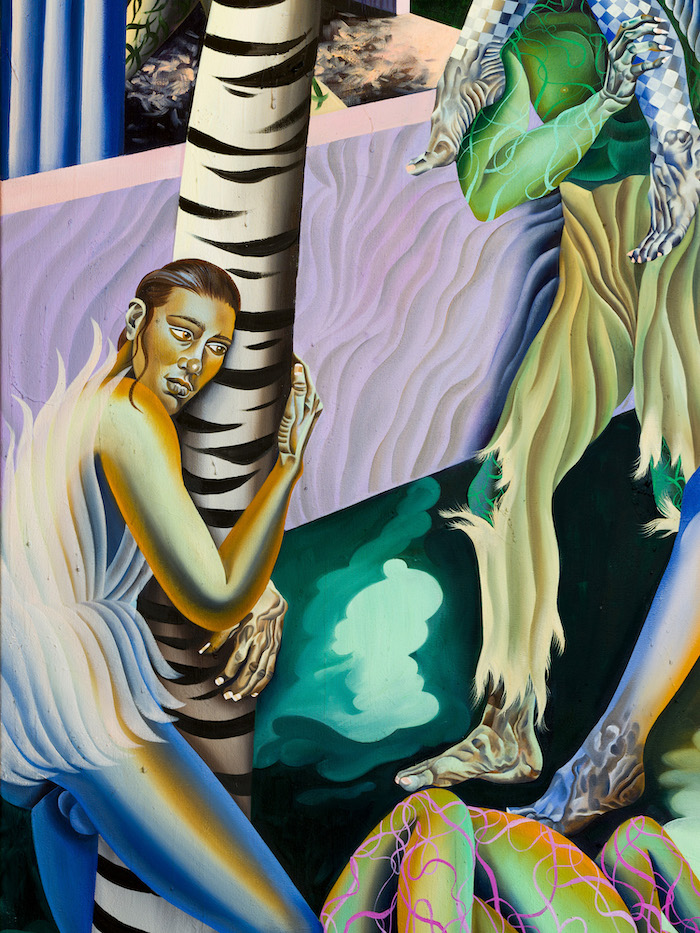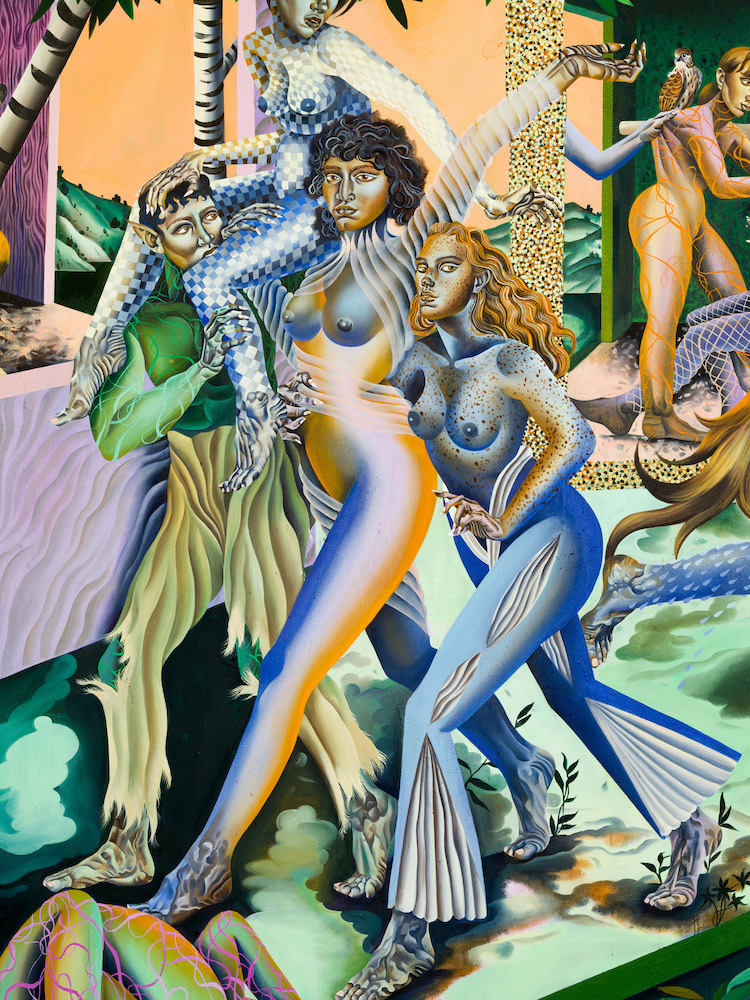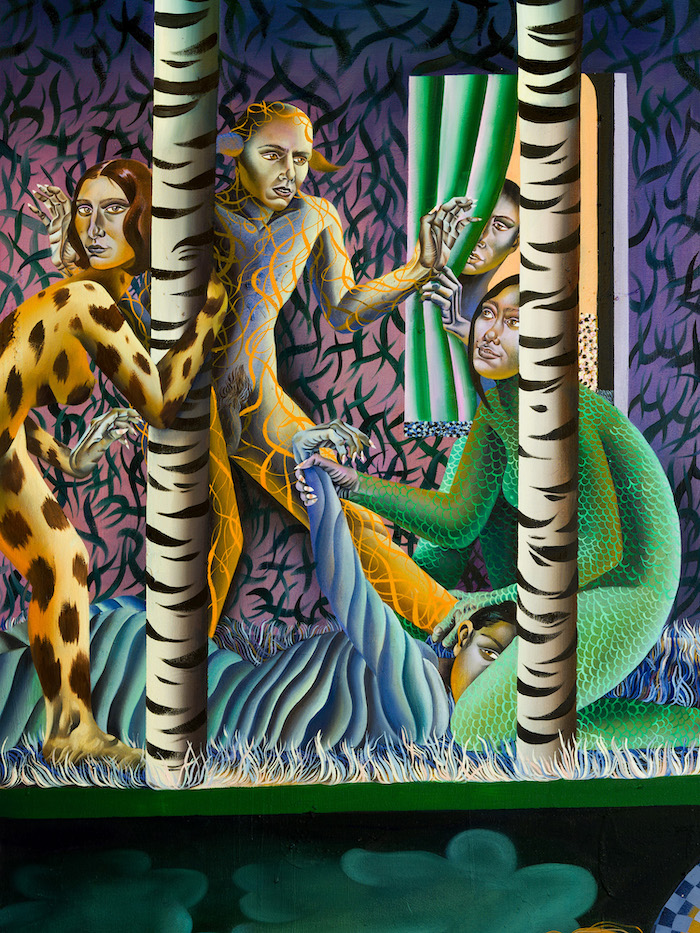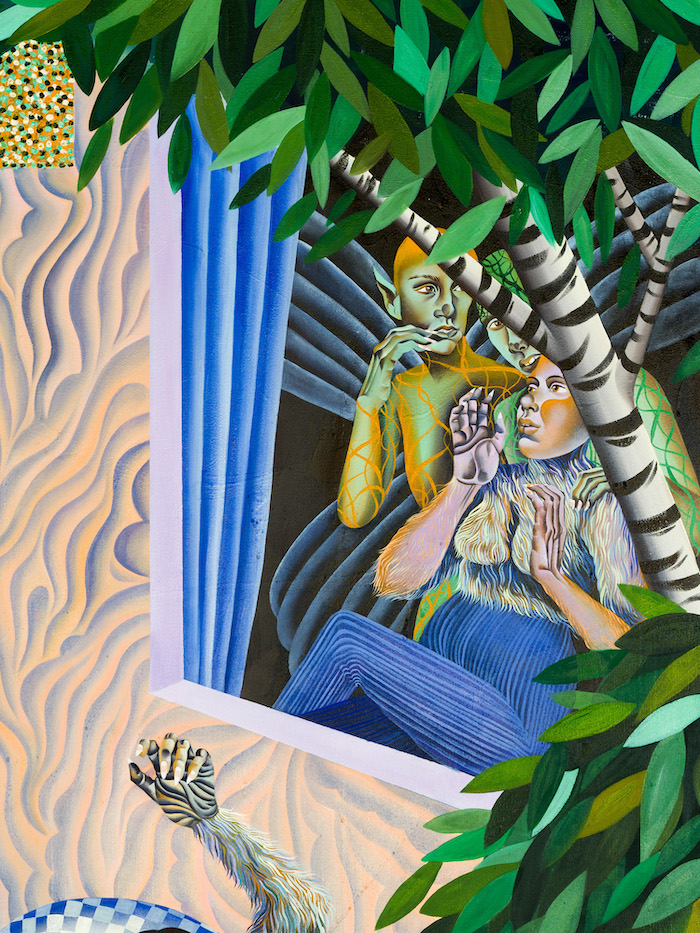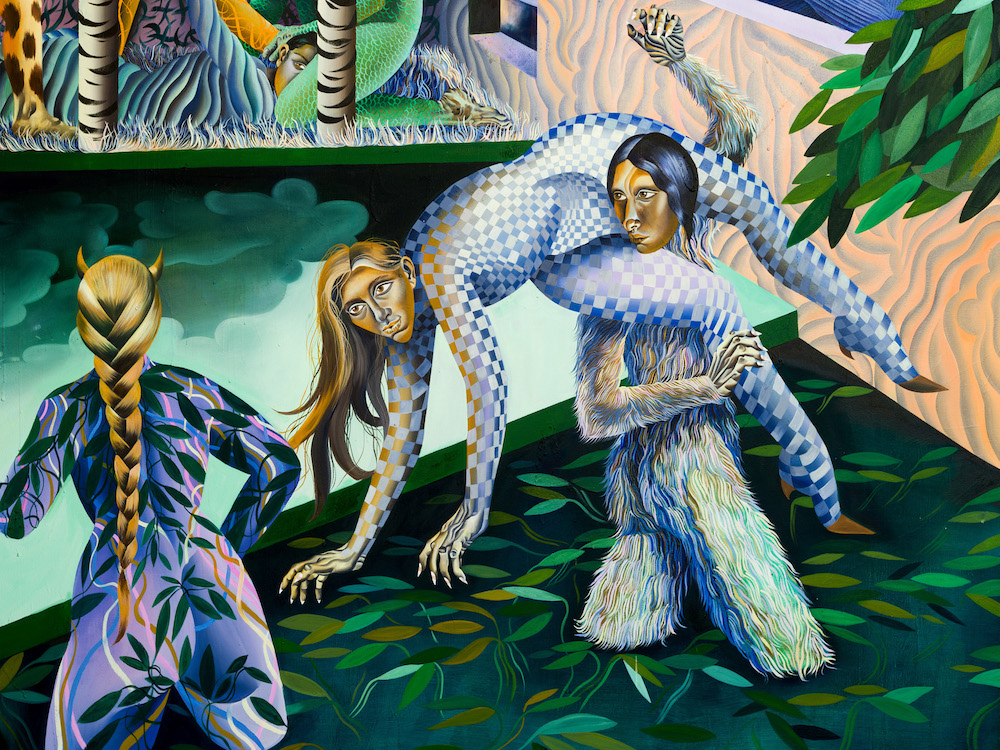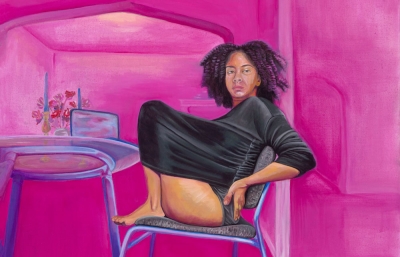François Ghebaly is proud to present Hoof on Bone, London-based artist Jessie Makinson’s newest exhibition at the Los Angeles gallery. From careful expressions and tight, jewel-like patterning to daunting tableaux of fantastical social portraiture, Jessie Makinson’s approach to scenography can perhaps best be described as a synthesis. Oscillating between historical, folkloric, environmental, and political modes, Makinson imbues her signature androgynes with whole networks of literary and mythological reference. These layered imaginaries, guided by Makinson’s chameleon storytelling voice, form scenes of rich sociality.
In her newest body of work, Makinson’s synthesis broaches both novel and familiar subject matters, blending caches of disparate references that span centuries of literature, visual art, and tradition: Georgian political cartoons, druid solstice celebration, Adam Wisniewski-Snerg’s The Robot and Han Kang’s The Vegetarian, fairy and UFO sightings through the ages. The exhibition title, Hoof on Bone, is excerpted from Hillary Mantel’s 1992 historical fiction novel, A Place of Greater Safety, during a scene in which men on horseback violently subdue a mob of French Revolutionary insurgents. Beyond the phrase’s literal meaning (as well as Makinson’s recurring interest in depictions of 18th century European publics), “hoof on bone” describes for the artist an important confluence—“of where, when, and why human and animal meet.”

Across her practice, chimeric forms dominate the many lattices of limb and interlocking gaze that comprise her sceneries. Anthropomorphic figures decked in horns, tails, dense furs, and Escherian prints writhe and jostle one another across semi- abstracted foregrounds. This titular sensibility extends to Makinson’s compositional and emotive interests, too—“I think about where the figures and spaces meet. Of the place where cloth touches skin, of how bodies press against each other in moments of pleasure and trauma.” Anchoring Makinson’s exhibition is the expansive triptych, We shall be monsters (2022), whose title comes from a line by the eponymous hero of Mary Shelley’s 1818 Frankenstein. Measuring over sixteen feet and depicting whole networks of raucous action and reaction, the triptych is a mammoth example of Makinson’s de-centered storytelling. Figures lift, strut, and prance across intersecting planes, swaggering to an almost hysterical tune. “They enfold one another, becoming part of each other like a frenzied molecular gang.”
Among the recurring motifs in Hoof on Bone, few stand out quite like the severed heads in works such as Come you minx (2022) and All the same bubbles (2022). Darkly humored and Medusa-like, the severed head is a playful, deconstructive motif for the artist— another gesture toward the animalic, often mischievous sociality that characterizes Makinson’s ensembles: “They bother each other, care for each other, cut each other’s heads off. They put their hands inside each other. Like they are surgeons or butchers or mechanics fixing a robot.” Though clearly figurative and narrative in nature, Makinson’s paintings belie complex underlayers of compositional exploration, too. Smaller formats like I know that bird (2022) and Can I have my kiss back? (2022) highlight the artist’s interest in human and animal forms as vessels for light, color, pattern, and space. Meanwhile, the limited palette in works like The smell of hysterics (2022) offer isolated, more formal examples of Makinson’s color and textural study. In combination with the artwork image, whose scene draws from 18th century drawings of brothel raids and yet reads almost like the floor of a modern party, Makinson’s jarring, motley sensibilities become uniquely attuned to the tenor of our strange times.



